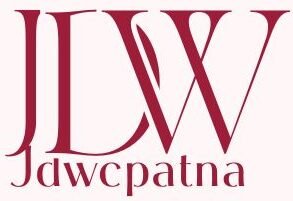Introduction
Viewed from standard perspective the 1998 Jefferson nickel maintains a five-cent valuation yet could achieve increased worth based on specific collection elements. A coin’s recorded value increases substantially based on its condition alongside its mint marks and presence of minting mistakes. An analysis of the distinctive characteristics that interests collectors in specific types of 1998 Jefferson nickel examples follows in this piece.
1998 Jefferson Nickel
Since its original introduction in 1938 the Jefferson nickel continues as a main United States cash denomination. The coin presents President Thomas Jefferson’s profile on one side and Monticello in its full form on the rear. In 1998, the Jefferson nickel was minted at three locations:
| Mint Location | Mint Mark | Purpose |
|---|---|---|
| Philadelphia | None | Circulation |
| Denver | D | Circulation |
| San Francisco | S | Proof coins for collectors |
Physical production levels for these nickels climbed into the billions thus making regular circulation examples abundant. High-quality or proof coins along with error coins stand out in the collecting world because of their greater value to collectors.

How Much Is a 1998 Nickel Worth?
The regular worn condition of 1998 nickels do not exceed their nominal value of five cents. Slightly higher prices can be obtained for circulated coins which exhibit outstanding condition.
- Value: $0.05 to $0.10
Uncirculated 1998 Nickels
Graded MS-65 uncirculated coins and higher have increased value because they maintain undamaged states with unaltered original brilliance.
- Value: $0.25 to $1
- High-Grade (MS-67 or above): $10 to $20, depending on demand
Full Steps Nickels
The market heavily pursues Nickels with Full Steps (FS) designation. Full Steps FS status refers to coins which preserve total legibility of Monticello’s staircase while all steps remain uninjured despite normal wear effects.
- Value: The value of a coin typically falls between $10 to $50 while exceptional high-grade examples increase beyond these prices.
Proof 1998-S Nickels
Proof nickels received special production at the San Francisco Mint for collectors to obtain. These coins possess reflective finishes alongside impressive crisp details.
- Value: $2 to $5 for standard proofs
- High-Grade Proofs: $10 or more
Error Coins

1998 error coins occupy the upper end of 1998 nickel value ranges as these pieces remain scarce. Some of the most sought-after errors include:
| Error Type | Description | Value |
|---|---|---|
| Off-Center Strikes | Coins with designs misaligned during minting | $20 to $200 |
| Double Dies | Portions of the design appear doubled | $25 to $100 |
| Die Cracks/Clashes | Visible cracks or clashes on the coin’s surface | $10 to $50 |
What to Look for in a 1998 Nickel
- Condition: Pure coinage commands always superior market value.
- Mint Marks: Check for the sign “D” (Denver) or an “S” (San Francisco) stamped on the coin.
- Full Steps: Study Monticello to check for complete unaltered steps.
- Errors: A magnifier should help you to detect doubling or minting flaws like die cracks.

The vast majority of 1998 Jefferson nickels have a face value of five cents but specimens in perfect condition and meeting Full Steps requirements or proof quality standards or showing minting problems command premium prices.
Analyzing your 1998 nickels through wallet inspection assists both dedicated collectors and casual observers of coinage. Checking your coins closely may lead you to discover something valuable.
Conclusion
Most 1998 nickel values stay at five cents though certain special issues and flawless examples could command appreciable market prices. Examining a 1998 nickel closely for both its physical state and minting origin alongside error detection will reveal at what price your coin should actually sell. A rare 1998 nickel containing production mistakes might command prices exceeding its face value so you should consider acquiring it for your collection.
FAQ’s
What is the value of a 1998 nickel?
Value is determined by condition, Full Steps, proof quality, or minting errors.
What is the value of an uncirculated 1998 nickel?
Uncirculated nickels are worth $0.25 to $1, or more if high grade.
What is a double die error?
A minting error in which parts of the coin’s design appear doubled.
What are Full Steps on a Jefferson nickel?
Full Steps refers to sharp, uninterrupted lines on Monticello’s steps.



